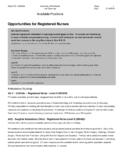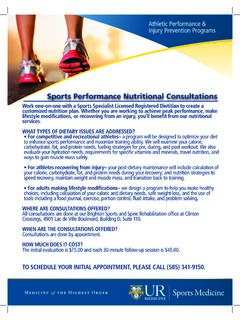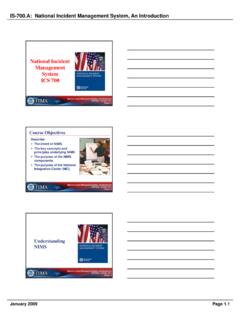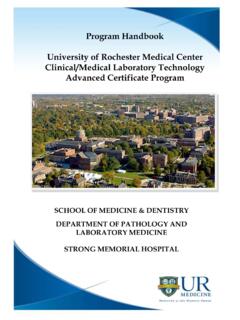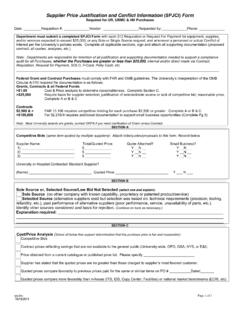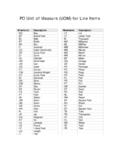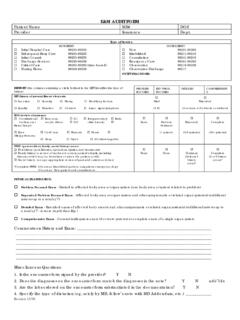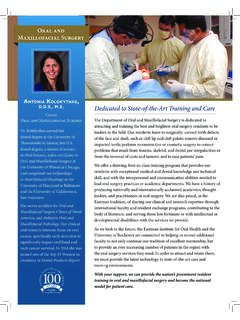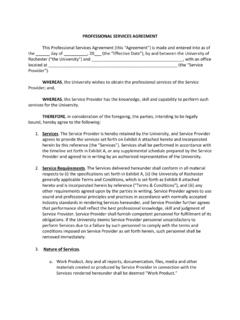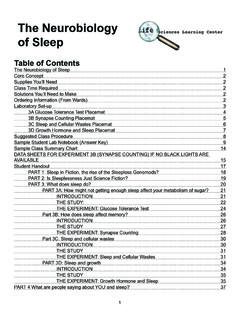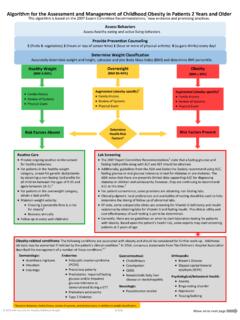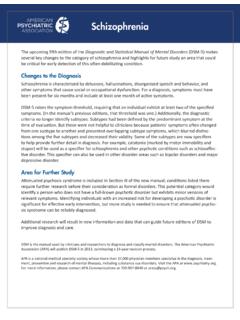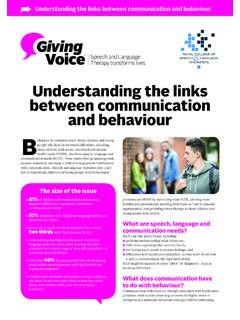Transcription of Behavioral Assessment and Intervention for Self-Injurious ...
1 Behavioral Assessment and Intervention for Self-Injurious BehaviorDavid McAdam, , BCBA-DRochester Regional Center for Autism Spectrum DisorderStrong Center for Developmental Disabilities2 RRCASD Webinar SeriesGet Started on Your Path to EmploymentKaitlyn Richardson, , March 14, 2018 3:00-4:00 at David B. McAdam, PhD, BCBA-DUniversity of Rochester School of MedicineDepartment of PediatricsStrong Center for Developmental Disabilities Warner School of Education and Human DevelopmentFebruary 2018 Rochester Regional Center for Autism Spectrum DisorderLearning Objectives Increase understanding Understanding of challenging behavior and SIB Risks associated with SIB Why persons with developmental disabilities engage in SIB The Behavioral Assessment of SIB interventions for SIB that can be implemented by parents and service providers Understanding
2 Of situations which suggest that parents and professional without specific training require additional help Emerson ( 2005 ) defined challengingbehavior as: .. culturally abnormal behaviour of such intensity, frequency or duration that the physical safety of the person or others is placed in serious jeopardy, or behaviour which is likely to seriously limit or deny access to the use of ordinary community What is missing from this definition?Types of Challenging behavior Displayed by Persons with ASD Self-Injurious behavior (SIB) Aggression Stereotypic behavior Tantrums (non-compliance paired with negative vocalizations, and aggression) Property Destruction Feeding Problems (only eating a small number of foods) Pica RuminationDefinitions of Self-Injurious BehaviorSelf-injurious behavior (SIB)
3 , displayed by individuals with autism and intellectual disabilities, involves the occurrence of behavior that results in physical injury to one's own body (Kennedy Krieger Institute).SIB is defined as behaviors that result in physical injury to an individual s own body (Center for Autism Research; The Children s Hospital of Philadelphia) .Common forms of SIB Head Banging Punching oneself Hitting oneself Hand Arm Biting Picking skin or sores Pica (swallowing non-edible items or objects) Excessive skill rubbing or scratching RuminationCharacteristics of persons with intellectual disabilities who display SIB: Gender: Males=57% Female 43% Level of Mental Retardation: 71% with severe or profound mental retardation Negative relationship between and probability of displaying et al.
4 (2002)Secondary Diagnoses Visual impairments (14%) Autism (10%) Hearing impairments (6%)Kahng et al. (2002)Topographies of Self-injury Head hitting Hair pulling Biting self Eye poking Hand mouthing Pinching self Body hitting Kicking Self ( , knee to head) Pica RuminationPotential Detrimental Consequences of SIB Interferes with learning ( , reduced rate of learning) Increases monetary cost of serving a person in his or her lifetime. Frequently results in placement in more restrictive settings Often result in referral to specialist (for example, a BCBA-D or licensed psychologist with specific training in Self-Injurious behavior )Causes/Theories of SIBWhy Do Individuals with Autism Engage in SIB?
5 Biological Setting Events Pain due to: Otitis Media Headaches Gastroesophageal Reflux Disease or other GI problems Menstrual Pain Sleep Deprivation Mood Allergies (skin scratching)Environmental Setting Events Noise Crowded situations Certain people or activitiesMedical Causes Some individuals with ASD are hypothesized to engage in SIB as a way to relieve pain. By stimulating pain in a controlled way (through engaging in SIB), a person may seeks to mask another pain, such as an ear infection toothache, headache, or Predisposition Research studies have shown that some individuals genes may make them more likely to engage in SIB.
6 Genetic syndromes include: Lesch-Nyhan Prader-Willi Smith-Magenis Fragile X de LangeOperant Causes Social Positive Reinforcement Social Negative Reinforcement Non -social ReinforcementLet s look at each of these in some detailSocial Positive Reinforcement (positive reinforcement) Person with Autism engage in SIB in order to get attention from other people or access to a high preference item or activity Attention may be from parent, teacher, peer, or only during specific situations (for example, two people talk to each other but not to the person)
7 To get a specific preferred item (for example, cookies, stuff animal, video game such as Mario Cart)Example of Positive ReinforcementJohn often hits himself in the head with his hand. Each time he hits himself he is reprimanded by his mother. John s frequency of SIB increases over time. Social Negative Reinforcement (negative reinforcement) SIB allows a person to escape from an activity (for example, math, brushing your teeth) SIB allows a person to avoid a situation that they find aversiveExample of Negative Reinforcement When asked to complete activities of daily living, such a brushing her teeth, Susan often bites herself on the hand.
8 Susan s teachers typically stop prompting her to complete the task. Susan s frequency of biting her hand increases over Reinforcement SIB is maintained by non-social factors SIB is not mediated by the actions of other people SIB should be as likelihood to occur when an individual is alone as in the presence of other peopleExample of Automatic ReinforcementJohn is alone in the front room of his group home. John is seated in a chair and occasionally hits himself in the head. Arousal TheoryIndividuals may engage in SIB to increase their arousal level or to counteract feeling over aroused.
9 SIBs may be an attempt to release tension or relieve anxiety Note: Arousal theory has been very difficult to demonstrate convincingly and current level of supporting evidence is not Communication and SIB Many individuals with ASD have some form of communication difficulty. SIB is seen most frequently in individuals with ASD who lack functional communication skills to express their wants and needs. The inability to communicate one s wants and needs sets the occasion for SIB. Discussion of the Assessment of SIBHow Often is SIB Socially Maintained versus Automatically Maintained?
10 About 60% of SIB is socially maintained Approximately about 40% of SIB is non-socially maintainedWhy do we want to collect data? To be sure that the behavior in question is really a problem To be sure that the change in behavior really happened To make sure that all team members agree on the desired behavior change To serve as a source for functional assessmentFunctional ( Behavioral ) Assessment IDEA 1997 mandated that a functional Behavioral Assessment is part of any written behavior plan Overarching goal of functional Assessment is to determine why the behavior occurs Takes into account medical, genetic, and biological factors as well as environment Today s best practices in Assessment and Intervention of problem behavior includes an FBAWhy should we care about the function of a problem behavior ?
